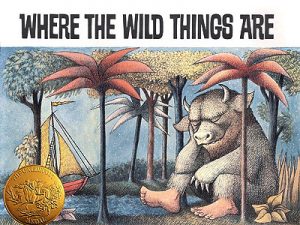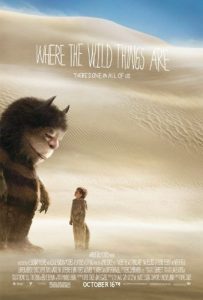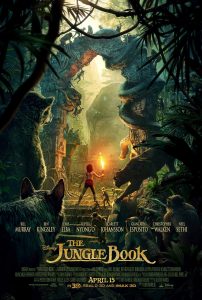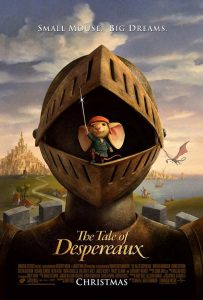 The night Max wore his wolf suit
The night Max wore his wolf suit
Maybe that is why I hesitate to see film versions of picture books I love. I know, I should encourage you to see the movies we are showing over the next four weeks, and I do, but you won’t find me at “Where the Wild Things Are.” That book lives in a unique way for me and my children and I’m not interested in anything that builds on it. I’ve also never seen “The Polar Express” for the same reason. And, I’m hoping no one attempts a movie version of “Goodnight Moon,” although the author, Margaret Wise Brown, embraced new technologies for her books.

But story books often work well in movies. Roald Dahl created unique (and strange) worlds that work visually and he initially supported the creation of a film based on “Charlie and the Chocolate Factory.” It became “Willy Wonka and the Chocolate Factory” (the 2005 remake brought back the original title), and now both the film and the book are “classics.” Stories such as “James and the Giant Peach” and “The Fantastic Mr. Fox” also bring to life Dahl’s developed stories. Dahl writes stories that can scare children, but, somehow, he seems to know how far he can push them. He treats children with respect, which is one reason his stories will continue to resonate with young readers.

Rudyard Kipling’s “The Jungle Book” was written for the best reason — it was for his daughter. In 2010, a first-edition of the book was found in his family’s possession with a handwritten note from Kipling. “This book belongs to Josephine Kipling for whom it was written by her father, May 1894.” That daughter passed away a few years after Kipling wrote the note — she was just six years old. There is no doubt those stories always meant something more to Kipling as a parent rather than just as an author. Kipling had more faith in children’s capacity for fear than Walt Disney, who fired the first screenwriters working on adapting the book for the original movie since they stayed too close to Kipling’s “dark” themes. It is likely that most of us know the upbeat Disney film version better than the book, and we are now showing the 2016 version which won the Academy Award for Special Effects for its use of live action/CGI technology. Remakes are not always well received, but this new version was a commercial and critical success. Great stories can come to life in different ways.

And, we open with the most recently written book in our series, “The Tale of Despereaux” by Kate DiCamillo. The 2003 novel is already considered a classic and this heartwarming movie will only add to the award-winning book’s reputation. Read the press release or visit our home page for previews and information about the films.
Hope College Director of Public Affairs and Events


well informed about the reason behind a story. yes! I’m talking about “The Jungle Book” and I’ve seen the movie but still not yet read the book. But I think, about interacting with children and get some attraction by stories early, we should write like kids. Because as we know and as well mentioned on this post children’s are the toughest audience and not easy to move their minds towards you want to